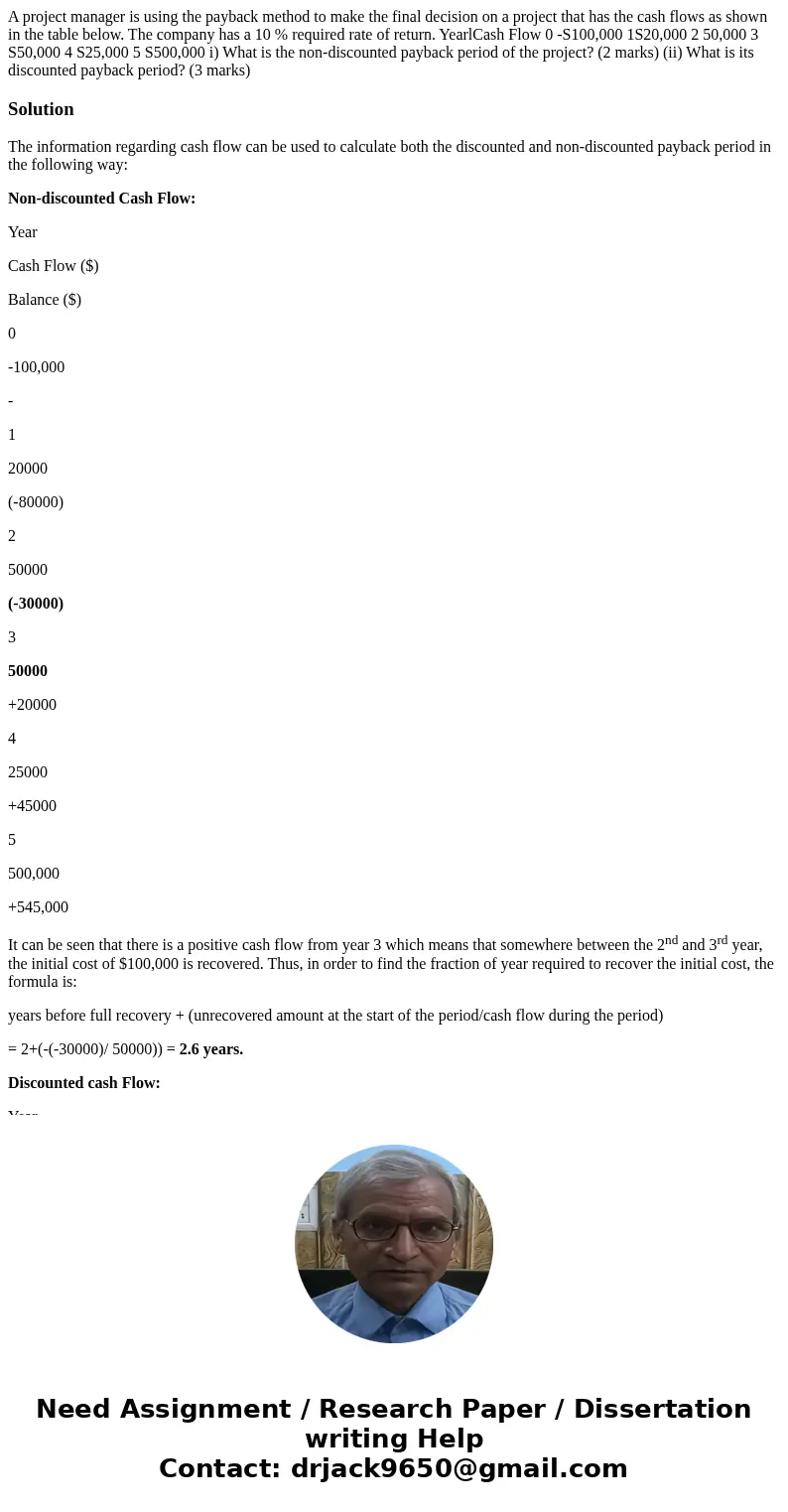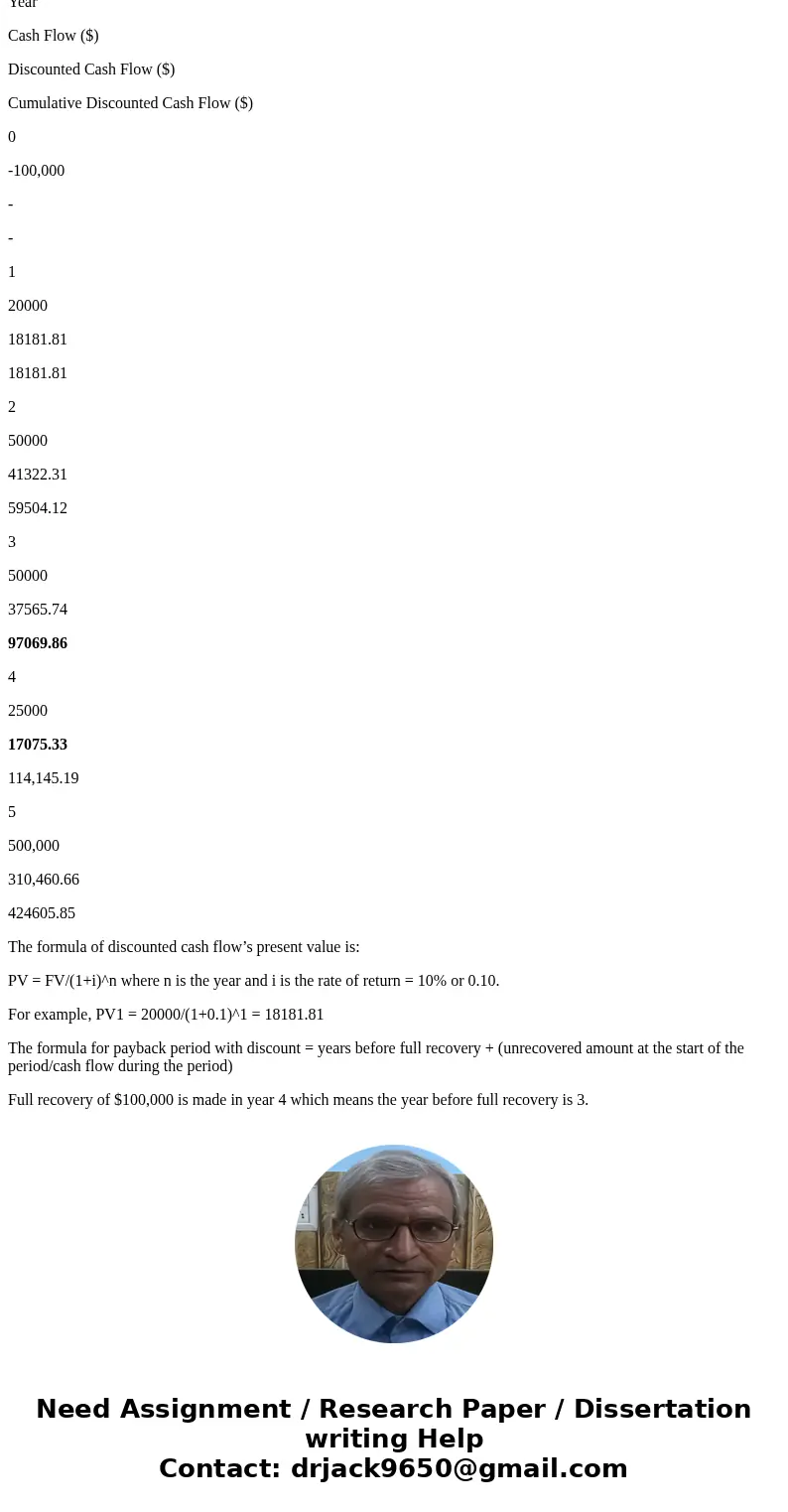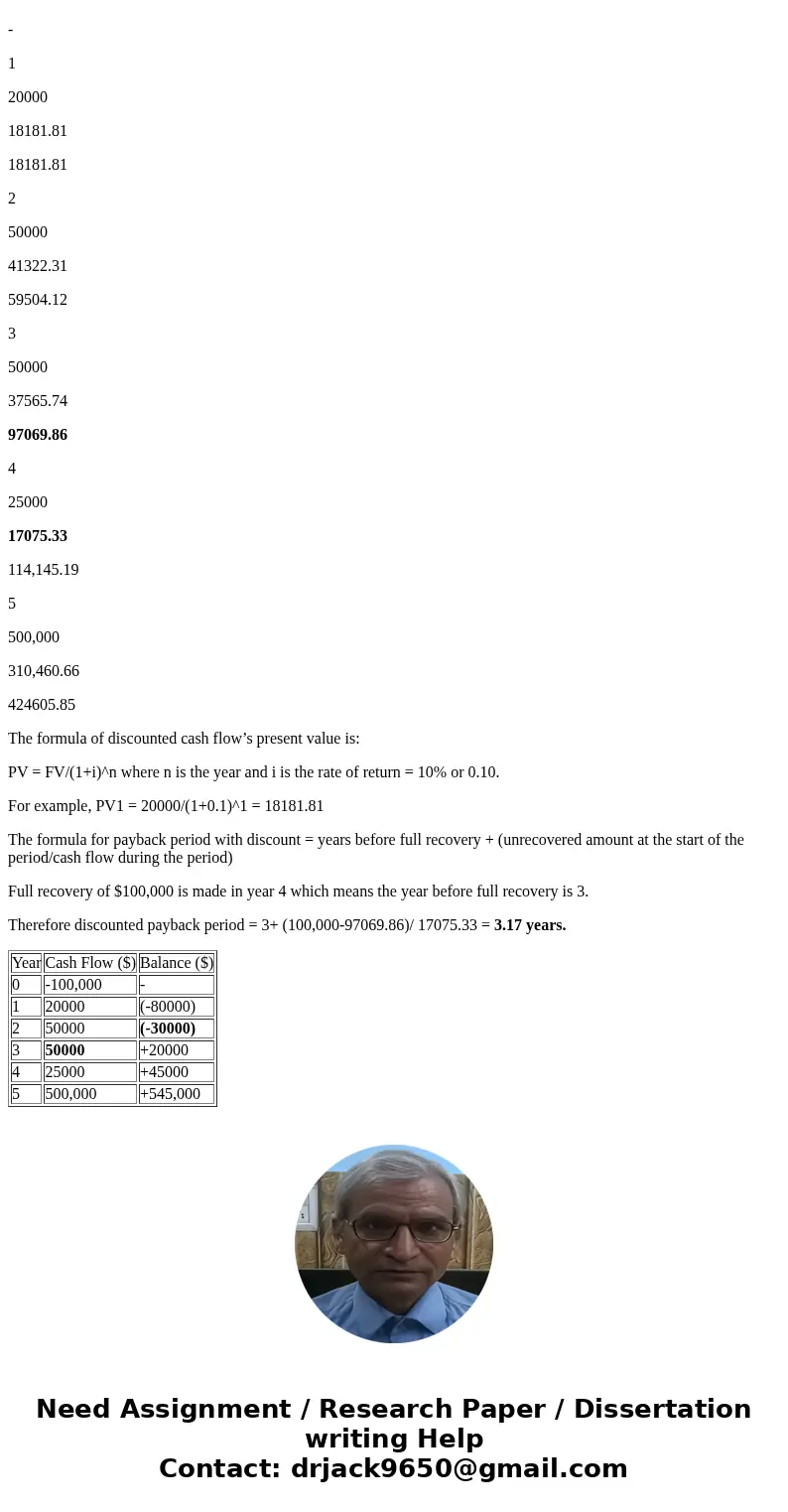A project manager is using the payback method to make the fi
Solution
The information regarding cash flow can be used to calculate both the discounted and non-discounted payback period in the following way:
Non-discounted Cash Flow:
Year
Cash Flow ($)
Balance ($)
0
-100,000
-
1
20000
(-80000)
2
50000
(-30000)
3
50000
+20000
4
25000
+45000
5
500,000
+545,000
It can be seen that there is a positive cash flow from year 3 which means that somewhere between the 2nd and 3rd year, the initial cost of $100,000 is recovered. Thus, in order to find the fraction of year required to recover the initial cost, the formula is:
years before full recovery + (unrecovered amount at the start of the period/cash flow during the period)
= 2+(-(-30000)/ 50000)) = 2.6 years.
Discounted cash Flow:
Year
Cash Flow ($)
Discounted Cash Flow ($)
Cumulative Discounted Cash Flow ($)
0
-100,000
-
-
1
20000
18181.81
18181.81
2
50000
41322.31
59504.12
3
50000
37565.74
97069.86
4
25000
17075.33
114,145.19
5
500,000
310,460.66
424605.85
The formula of discounted cash flow’s present value is:
PV = FV/(1+i)^n where n is the year and i is the rate of return = 10% or 0.10.
For example, PV1 = 20000/(1+0.1)^1 = 18181.81
The formula for payback period with discount = years before full recovery + (unrecovered amount at the start of the period/cash flow during the period)
Full recovery of $100,000 is made in year 4 which means the year before full recovery is 3.
Therefore discounted payback period = 3+ (100,000-97069.86)/ 17075.33 = 3.17 years.
| Year | Cash Flow ($) | Balance ($) |
| 0 | -100,000 | - |
| 1 | 20000 | (-80000) |
| 2 | 50000 | (-30000) |
| 3 | 50000 | +20000 |
| 4 | 25000 | +45000 |
| 5 | 500,000 | +545,000 |



 Homework Sourse
Homework Sourse